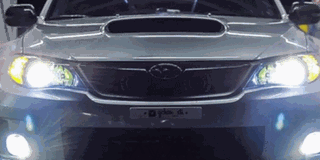When are you required to use fog lights

It is hard to drive a kilometre on Ugandan roads without finding an overzealous driver cruising away with fog lights on.
It is so common that some drivers even use them during day.
Car light systems have benefited a lot from technology and at least most cars have been fitted with the latest lighting systems.
Fog lights clear road visibility with beams directed on the road surface.
However, you wonder why someone would be using them during day, especially when the weather is clear.
When I had just started driving, I used to put on my fog lights all the time. But if you had asked me then, I would be lying if I told you I knew their function.
For starters, fog lights, as their name suggests, were developed for use in dangerously thick fog but can also be used for other conditions in which visibility is severely limited.
Fog lights are completely separate units from standard headlights and are rarely used, especially in the tropics.
I believe most drivers in Uganda use them out of ignorance much as they offer a clear illumination of the road, especially at night.
Their beams are flat and wide, and they are positioned low on the car, usually near the front bumper.
The shape of fog light beams comes in a narrow bar cutting through the fog and light up the surface of the road so that drivers can see well enough to stay on the road and within their lane.
In addition to fog and mist, fog lights are also useful where there are significant amounts of dust, either drifting in through the air or being churned up from the surface of the road.
Without fog lights, drivers might fail to clearly see road obstructions such as dead animals and potholes that characterise much of Ugandan roads.
Unlike headlights, fog lights are only specific to certain weather conditions, especially fog that can be extremely dangerous.
Most fog lights illuminate a yellowish array of light but some have of late been formed to give off neon beams.


